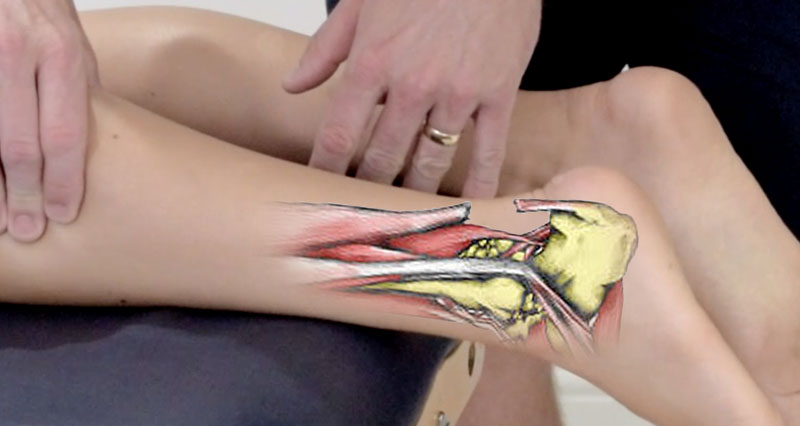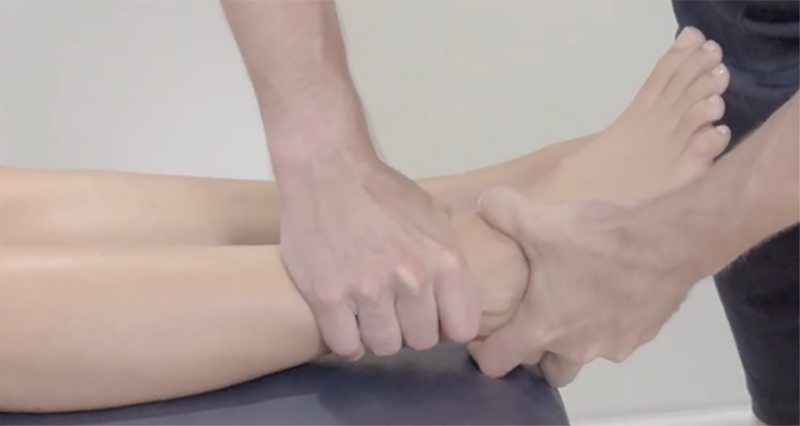The internal ankle rotation test assesses the integrity of the ligaments involved in a high ankle sprain. Specifically, it aims to reproduce symptoms from a tibiofibular ligament injury.
What is a High ankle sprain?

A high ankle sprain is a tear of the tibiofibular ligament at the top of the ankle. It is more severe than a common sprained ankle because it often occurs along with a fracture. As a result, it is usually more difficult to treat.
The most commonly injured ligament in a high ankle sprain is the anterior tibiofibular ligament. The anterior tibiofibular ligament connects the tibia to the fibula at the front of the ankle. Its function is to prevent the two bones separating when standing, walking or running. Severe injuries can also cause damage to the syndesmosis which is a membrane connecting the Tibia and Fibula.
How to perform the test:
Start the test by asking the patient to stand up comfortably. Support them if needed. Tell the patient to slightly bend the knee of the leg they are testing. Then, they gently turn their knee inward. Watch how the ankle and foot move, and look for any pain or discomfort the patient feels.
What is a positive Internal ankle rotation test?

A positive internal ankle rotation test is indicated by pain in the high ankle area when the patient rotates their knee inward. This pain is typical of a high ankle sprain. To confirm the test’s accuracy, compare the results with the other leg.
Considerations
Use this test in conjunction with the squeeze test and the external ankle rotation test to help diagnose a high ankle sprain. Also, be mindful of the patient’s pain tolerance; excessive force can worsen injuries. Consider additional imaging or a specialist consultation for a more detailed assessment.




